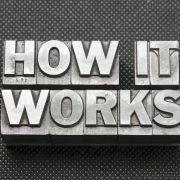The Solo 401(k) Plan for the Self-Employed
Many self-employed individuals are looking for ways to set money aside, outside of the business, for retirement – but find they earn too much to qualify for IRAs, or that the $5,500 allowable contribution limits for IRAs are suffocatingly small. Fortunately, if you’re self-employed or the owner/employee of your own corporation, you may have a solution: The Solo 401(k), sometimes called the individual 401(k).
History of the Solo 401(k)
The Solo 401(k) became a reality in 2001, with the passage of the Economic Growth and Recovery Tax Relief Reconciliation Act – the same law that passed the so-called “Bush Tax Cuts” that politicians had been fighting about for more than a decade.
The law not only cut tax brackets for all taxpayers and lowered capital gains taxes, but it also relaxed the administrative requirements for 401(k)s for very small companies that only intended to cover the owner, or the owner and his or her spouse, under the plan.
Do you qualify for a Solo 401(k)?
To contribute to a Solo 401(k), you must have at least some self-employed income for the year. You do not have to be self-employed full-time. A number of our clients work for a corporation full time, and then do consulting work and route a large amount of their consulting income into a solo 401(k) plan.
Types of Solo 401(k)s
You can choose a traditional broker-supported Solo 401(k), in which a brokerage company selects the allowable investment options within the fund for you, or you can choose to control your investment menu yourself with a self-directed 401(k) plan – which is our specialty at American IRA.
The Self-directed 401(k) allows you to invest in a much broader array of investment options and asset classes than are normally available in a 401(k) package you can get from an investment house. For example, by establishing a Solo 401(k) with us, you can diversify your retirement assets – depending on your own personal strengths, expertise, and circumstances, into the following kinds of assets:
o Rental real estate
o Commercial real estate
o House-flipping
o Gold, silver and/or platinum
o FOREX
o Foreign real estate
o Land banking
o Tax liens and tax lien certificates
o Closely held companies
o Private lending
o Private equity
o Venture capital
o Partnerships and LLCs
… and much more.
Roth Solo 401(k)s
In a relatively recent development, the IRS has begun to allow for designated Roth accounts within Solo 401(k)s. So if you don’t need an immediate tax deduction but you are more attracted to the prospect of unlimited tax-free growth, you may want to explore the Roth option within a Solo 401(k). Note that some employer-sponsored or broker-sold 401(k) plans do not allow for designated Roth accounts, so read plan rules carefully. With Solo 401(k)s, including self-directed plans, you can generally design the plan rules yourself, within certain limits.
Who Should Consider a Solo 401(k)?
A Solo 401(k) could work very well for you if:
o You are self-employed, or the owner-employee of a corporation or LLC with no full-time employees other than your spouse.
o You want to increase your retirement savings.
o You want a lower current tax liability or to increase your available tax deductions.
o You haven’t been able to contribute the max to a tax-deductible IRA or Roth IRA because of income limitations.
o You have an uneven income that varies substantially from one year to the next, so you can’t commit to a fixed contribution every year.
o You want to minimize paperwork and administrative expense.
o Your earnings are significant enough to save substantial amounts of money every year. If you have the income to support it, a solo 401(k) will allow you to save as much as $52,000 per year if you are younger than 50, or up to $57,500 for those age 50 and older.
o You want the flexibility to take a loan out of, or borrow against your 401(k) balance. 401(k) rules allow account holders to borrow up to $50,000 of their 401(k) balances. Not every plan allows for plan loans, however.
Contribution Limits
Allowable annual contributions to 401(k) plans are per person. So you can’t double up on two max-funded 401(k) plans. You can, however, contribute to multiple 401(k) plans, as long as you don’t exceed the overall annual limits.
If you’re a business owner, you get to wear two hats when it comes to Solo 401(k) contributions. For tax year 2014, you can make elective deferrals of up to $17,500, or up to $23,000 if you are age 50 or over.
In addition, in your role as your own employer, you can elect to contribute up to 25 percent of compensation (as defined by your plan rules), or if you are self-employed, up to your earned income after deducting one half of your self-employment tax and whatever elective deferrals you made to the plan for the year.
This sounds complicated, but give us a call and we can walk you through your options.
Notes
Unless you invest exclusively using a designated Roth account, Solo 401(k) plans are subject to required minimum distribution rules. So you must begin withdrawing from your plan and paying taxes on those withdrawals shortly after the year in which you turn age 70½.
For more information, see Department of Labor Publication 4222, 401(k) Plans for Small Businesses. Better yet, give us a call at 1-866-7500-IRA(472). We look forward to hearing from you!




